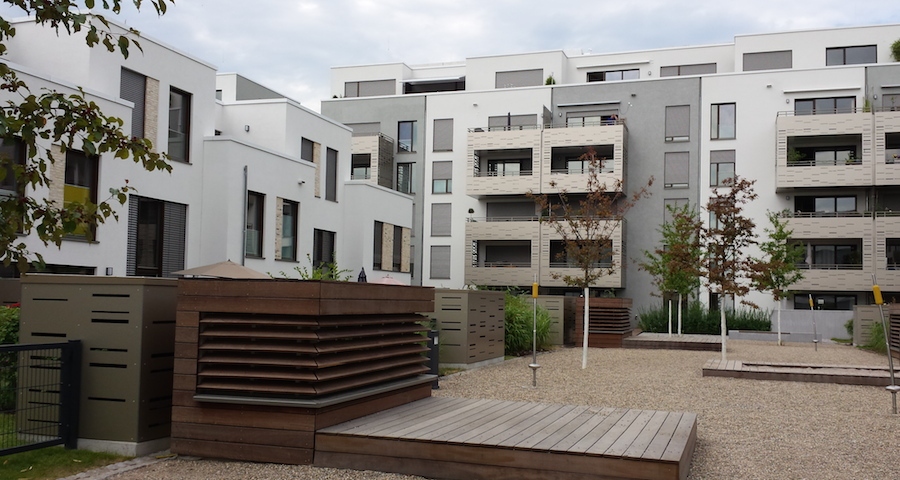
- Events
- Posted
World's largest passive house district presented with award
The district of Bahnstadt, Heidelberg in south-west Germany picked up the 2014 Passive House Award in the "regions" category at this year's International Passive House Conference.
Below is some more information, from the Passive House Institute, on this exciting new urban quarter.
Heidelberg’s Bahnstadt is the world’s largest passive house district – recently awarded the 2014 Passive House Award at the International Passive House Conference for its exemplary nature. More than one hundred projects entered to compete in a total of six categories. The Bahnstadt district was far and away the favourite in the “region” category. On Friday, 27 June, the official award plaque was affixed to the district’s Schwetzinger Terrasse kindergarten, thereby making the international recognition visible to passers-by within the cityscape itself.
“The award displays strikingly the pioneering spirit demonstrated by the world’s largest passive house neighbourhood,” affirmed Heidelberg’s mayor, Dr. Eckart Würzner, during the official unveiling of the Passive House Award plaque. “The Bahnstadt district is gaining ever more attention internationally and is visibly asserting itself as one of the most innovative urban development projects of our time. Our newest city district shows what is possible when existing technical opportunities are intelligently employed and is a source of pride.”
“High energy performance construction is establishing itself in an increasing number of countries. An entire city district built to the passive house Standard, however, is until now unique,” comments Dr Wolfgang Feist, director of the Passive House Institute. “In this way, the City of Heidelberg is delivering a blueprint for the future. The European [Energy Perfomance of] Buildings directive dictates that so-called nearly zero energy buildings are to become the norm by 2021. With the passive house standard, Bahnstadt is already fulfilling these requirements.”
The award jury pointed to Bahnstadt as a model for how passive house can become the standard for urban developments and entire cities. At the same time, the project clearly shows how the long-term planning of local authorities can contribute to high levels of energy efficiency and sustainable development.
Heidelberg’s newest city district, Bahnstadt is being built completely to the passive house standard. The basis for this is an integrated energy concept that was developed and passed by the Heidelberg City Council alongside urban development and other key concepts necessary for such a scheme. The passive house standard is legally binding through contracts and was set via a development law mechanism. Additionally, compliance with the passive house standard has been integrated into the building permit process. Special energy consulting and financial aid is available for builders and developers. Currently, the first segment of residential building is mostly finished, already offering living space for some 1,500 people. The entire residential part of the project is currently two years ahead of schedule due to the high demand. In addition to living space and a kindergarten, the district will also offer passive house cafes, restaurants, office space, a laboratory, a supermarket, a movie theatre, and a building supply store.

